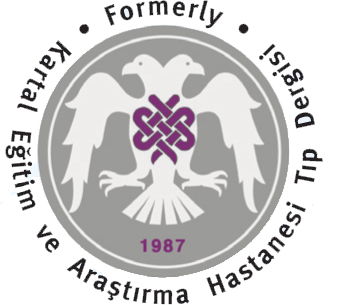Has the Pandemic Changed the Effectiveness of Pressure Ulcer Care in non-COVID Intensive Care Units? A Single-Center Retrospective Study
Fulya Çiyiltepe, Yeliz Bilir, Elif Akova Deniz, Elif Bombacı, Kemal Tolga SaracogluDepartment of Anesthesiology and Intensive Care, Kartal Dr. Lütfi Kırdar City Hospital, İstanbul, TurkeyINTRODUCTION: Critically ill patients, such as intensive care patients, are highly vulnerable to pressure ulcers (PUs). Due to the increased workforce brought by the COVID-19 pandemic, there have been changes in the number of patients and the quality of follow-up. The primary aim of our study is to examine the effects of the first year of the pandemic on pressure ulcer follow-up and treatment strategies for patients hospitalized in non-COVID intensive care units (ICU). The secondary aim is to examine the effect of nutritional support.
METHODS: The data of 120 patients who were followed up in the non-COVID ICU for at least 2 weeks between JanuaryMarch 2021(Group 1) and JanuaryMarch 2020 (Group 2) and followed up with PUs were retrospectively analyzed. In addition to the demographic data and comorbidities of the patients, admission from the nursing home, stages of PUs at admission, changes in stages, and nutritional parameters were recorded.
RESULTS: While an increase in the PU stage was detected in 24 patients in Group 1, no increase in the stage of the wound was observed in Group 2 (32.0 vs 0, p=0.000). The transferrin value measured during hospitalization was found to be lower in Group 1 (1.23 vs 1.43, p=0.008). In Group 1, the prealbumin value decreased (0.9 vs 0.2, p=0.008) on day 15 compared with the hospitalization and C-reactive protein value increased. In Group 2, the albumin value was found to be lower (2.5 vs 2.3, p=0.047) on day 15 compared with the day of hospitalization.
DISCUSSION AND CONCLUSION: In the first year of the pandemic, there was an increase in the existing pressure ulcer stage and a decrease in the nutritional status in patients hospitalized in the ICU for non-COVID reasons. We believe that this might be due to the increased patient care needs and the burnout of healthcare staff due to the COVID pandemic.
Pandemi, COVID dışı yoğun bakım ünitelerinde bası yarası bakımının etkinliğini değiştirdi mi?: Tek merkezli retrospektif çalışma
Fulya Çiyiltepe, Yeliz Bilir, Elif Akova Deniz, Elif Bombacı, Kemal Tolga SaracogluSağlık Bilimleri Üniversitesi Kartal Dr. Lütfi Kırdar Şehir Hastanesi, Anesteziyoloji ve Yoğun Bakım Kliniği, İstanbul, TurkiyeGİRİŞ ve AMAÇ: Yoğun bakım hastaları gibi kritik durumdaki hastalar, basınç ülserlerine karşı oldukça savunmasızdır. COVID-19 pandemisinin getirmiş olduğu artmış iş gücü nedeniyle yoğun bakım ünitelerinde takip edilen hasta sayısında ve takip kalitesinde değişiklikler olmuştur. Çalışmamızın birincil amacı, pandeminin ilk yılında artan sağlık ihtiyaçlarının, COVID dışı yoğun bakım ünitelerinde (YBÜ) yatan hastalara yönelik basınç ülseri takip ve tedavi stratejileri üzerindeki etkilerini incelemek, ikincil amacı ise beslenme desteğinin basınç ülserleri üzerine olan etkisini ve bu süreçteki seyrini incelemektir.
YÖNTEM ve GEREÇLER: OcakMart 2021 (Grup 1) ve OcakMart 2020 (Grup 2) tarihlerinde en az iki hafta COVID dışı YBÜde izlenen ve basınç ülseri ile takip edilen 120 hastanın verileri geriye dönük olarak incelendi. Hastaların demografik verileri ve komorbiditelerinin yanı sıra bakım evinden kabul edilmiş olması, kabuldeki basınç ülserlerinin evreleri, evrelerdeki değişiklikler, ve beslenme parametreleri kaydedildi. Profesyonel yara bakım ekibi tarafından yara evreleri ve değişimleri kayıt edildi.
BULGULAR: Grup 1de 24 hastada bası yarası evresinde artış saptanırken, Grup 2de yara evresinde artış izlenmedi (32.0a 0, p=0.000). Hastanede yatış sırasında ölçülen transferrin değeri Grup 1de daha düşük bulundu (1.23e karşı 1.43, p=0.008). Grup 1de yatışa göre 15. günde prealbümin değeri azaldı (0.9a 0.2; p=0.008), CRP değeri arttı. Grup 2de albumin değeri yatış gününe göre 15. günde (2.5e 2.3; p=0.047) daha düşük bulundu.
TARTIŞMA ve SONUÇ: Pandeminin ilk yılında, COVID dışı nedenlerle yoğun bakım ünitesinde yatan hastalarda mevcut basınç ülseri evresinde artış ve beslenme durumunda azalma oldu. Bunun, COVID pandemisi nedeniyle artan hasta bakım ihtiyaçları ve sağlık personelinin tükenmişliğinden kaynaklanabileceğini düşünüyoruz.
Manuscript Language: English



















